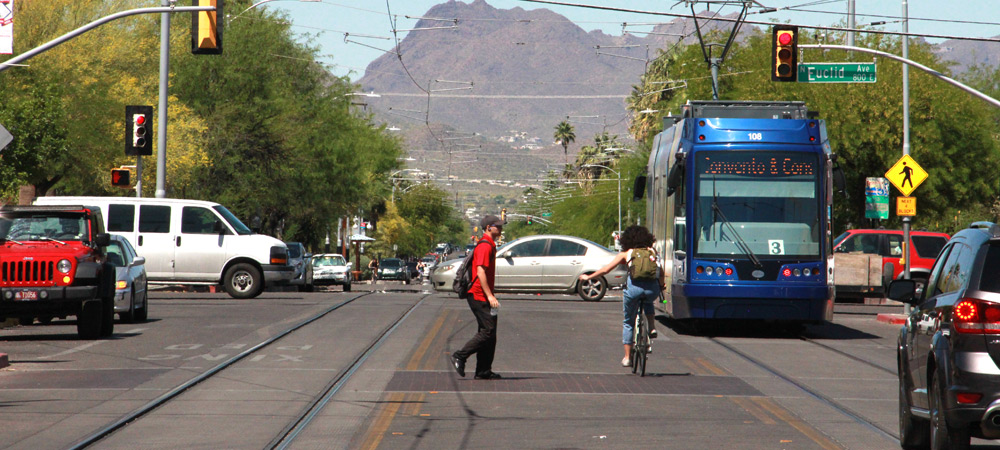
Transportation planning helps leads to a quality network that supports the economic vitality of the greater Tucson area. Safety and security for all users are other factors applied in transportation planning. Preserving the existing transportation infrastructure and increasing the accessibility and mobility of people and goods are also part of the planning equation.
As a metropolitan planning organization (MPO), Pima Association of Governments is tasked with long-range and short-range transportation planning. This complex responsibility involves working with local, county, state and tribal members who serve on PAG’s Regional Council and PAG committees to anticipate regional transportation funding and project needs. As an MPO, PAG is required to develop and update a long-range transportation plan to secure federal dollars for the region.
These responsibilities arise in being a designated Transportation Management Area (TMA) by the U.S. Secretary of Transportation. The designation can be made in urban areas that exceed 200,000 people. PAG uses population estimates, travel modeling, environmental assessments and more to help meet regional transportation needs of the region’s jurisdictions and residents.
Regional planning considerations include infrastructure condition, economic opportunities, population growth, changing transportation needs, air quality and funding sources.
The two primary vehicles for regional transportation planning are the long-term Regional Mobility and Accessibility Plan, which identifies priority transportation projects for a 25-year period, and the shorter-term Transportation Improvement Program, which is updated every two years and reflects five years of scheduled and funded projects in the pipeline. Planned projects, such as those in the Regional Transportation Authority’s 20-year, voter-approved plan must appear in both documents. The RTA, a taxing district within Pima County and established by the state Legislature, is managed by PAG.
PAG also conducts transit, pedestrian, bicycle and freight planning in association with its long-range transportation planning efforts.

